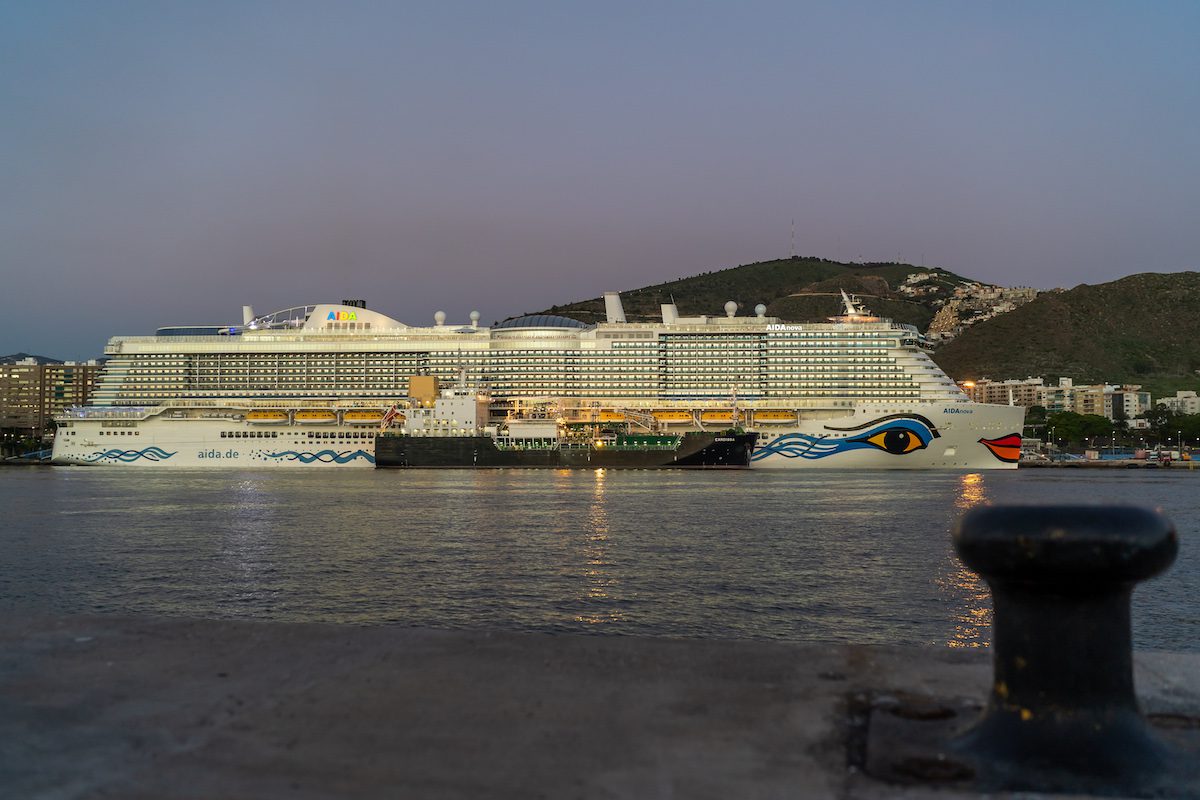Chinese Cruise Ships Look To Steer Clear Of Japan
By Ju-min Park, Hyunjoo Jin and Heekyong Yang SEOUL Nov 21 (Reuters) – Chinese cruise operators are scrambling to avoid Japanese ports as Beijing and Tokyo engage in a diplomatic dispute, which...

AIDAnova LNG bunkering at the LNG-capable Tenerife Cruise Terminal. Photo: Carnival Corporation
Carnival Corporation has marked the start of its operation of the Santa Cruz de Tenerife Cruise Terminal in the Canary Islands with the maiden call of AIDAnova, the world’s first fully LNG-powered cruise ship.
Carnival Corporation recently announced an agreement with the Port Authority of Santa Cruz de Tenerife to be the first concession-holder to operate the Canary Islands’ and Mid Atlantic´s newest cruise terminal.
AIDAnova arrived at the terminal under LNG power Tuesday afternoon, where it was boarded by AIDA Cruises’ president, Felix Eichhorn, Fernando Clavijo Batlle, president of the Canary Islands, and Pedro Suárez López de Vergara, president of the Port Authority of Santa Cruz de Tenerife, as some of the first guests on board.
The new LNG-ready Santa Cruz de Tenerife Cruise Terminal concession in the Canary Islands operated by Carnival Corporation can accommodate next-generation “green” cruise ships powered by LNG, including AIDAnova. The first LNG bunkering at the port took place upon AIDAnova’s arrival, made possible by a supply agreement signed in 2016 between Carnival Corporation and Shell Western LNG B.V. (Shell).
“We are looking forward to a successful premiere season in the Canary Islands,” said Eichhorn. “AIDAnova is a milestone for our company and the entire cruise industry by offering entirely new vacation experiences. With our new ship, we will contribute to further economic growth of the local tourism and maritime industry. With an extraordinary variety of individual vacation options on board and ashore, we are providing new and exciting reasons for people to enjoy a cruise vacation, one of the vacation industry’s fastest-growing sectors. Furthermore, with our pioneering LNG technology, we start a new era of even more environmentally friendly cruising.”
In total, following AIDAnova, Carnival Corporation has an additional 10 next-generation “green” cruise ships on order that will be powered by LNG in port and at sea, with expected delivery dates between 2019 and 2025, leading the cruise industry’s use of LNG to power cruise ships.

Sign up for gCaptain’s newsletter and never miss an update

Subscribe to gCaptain Daily and stay informed with the latest global maritime and offshore news
Essential news coupled with the finest maritime content sourced from across the globe.
Sign Up